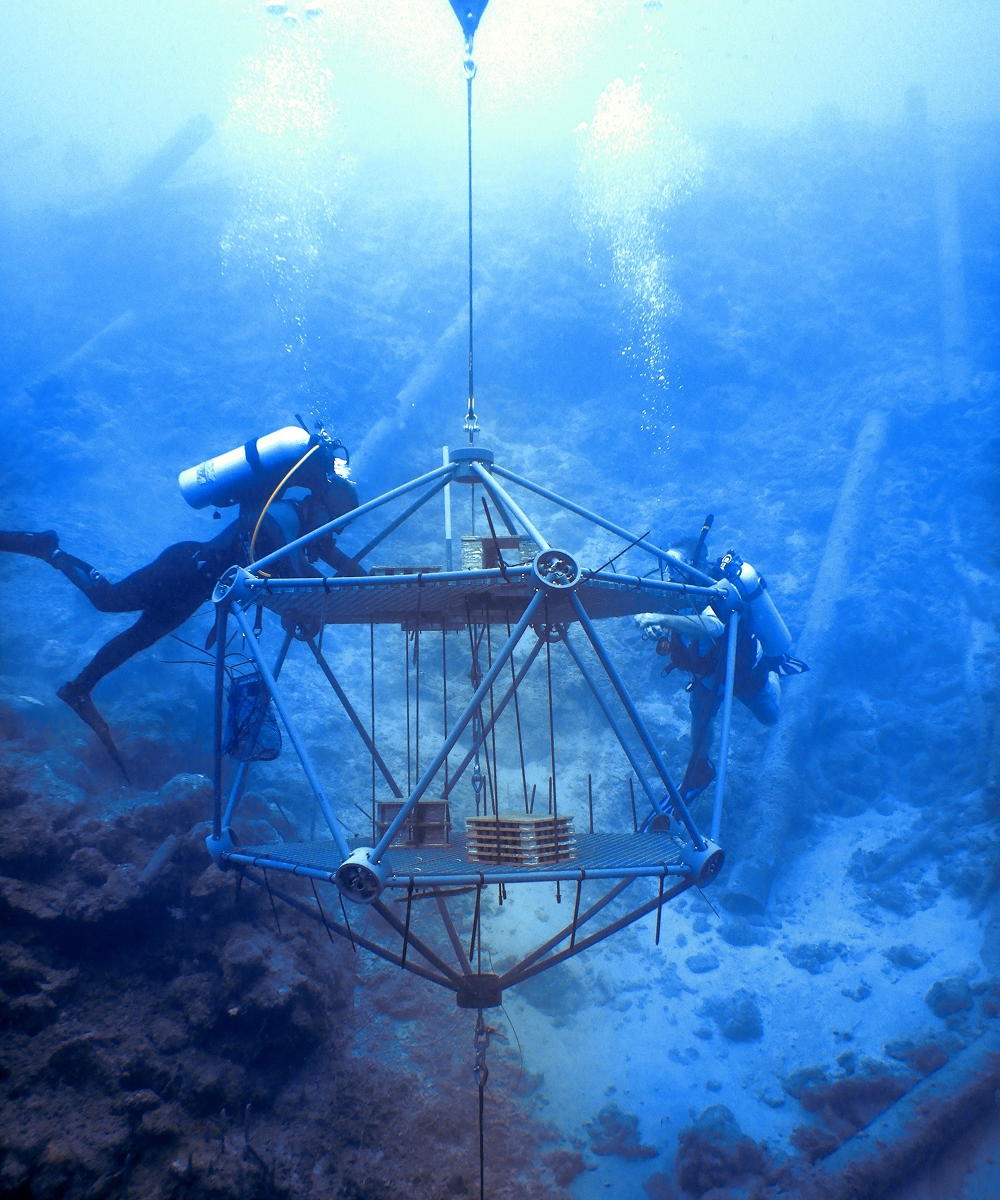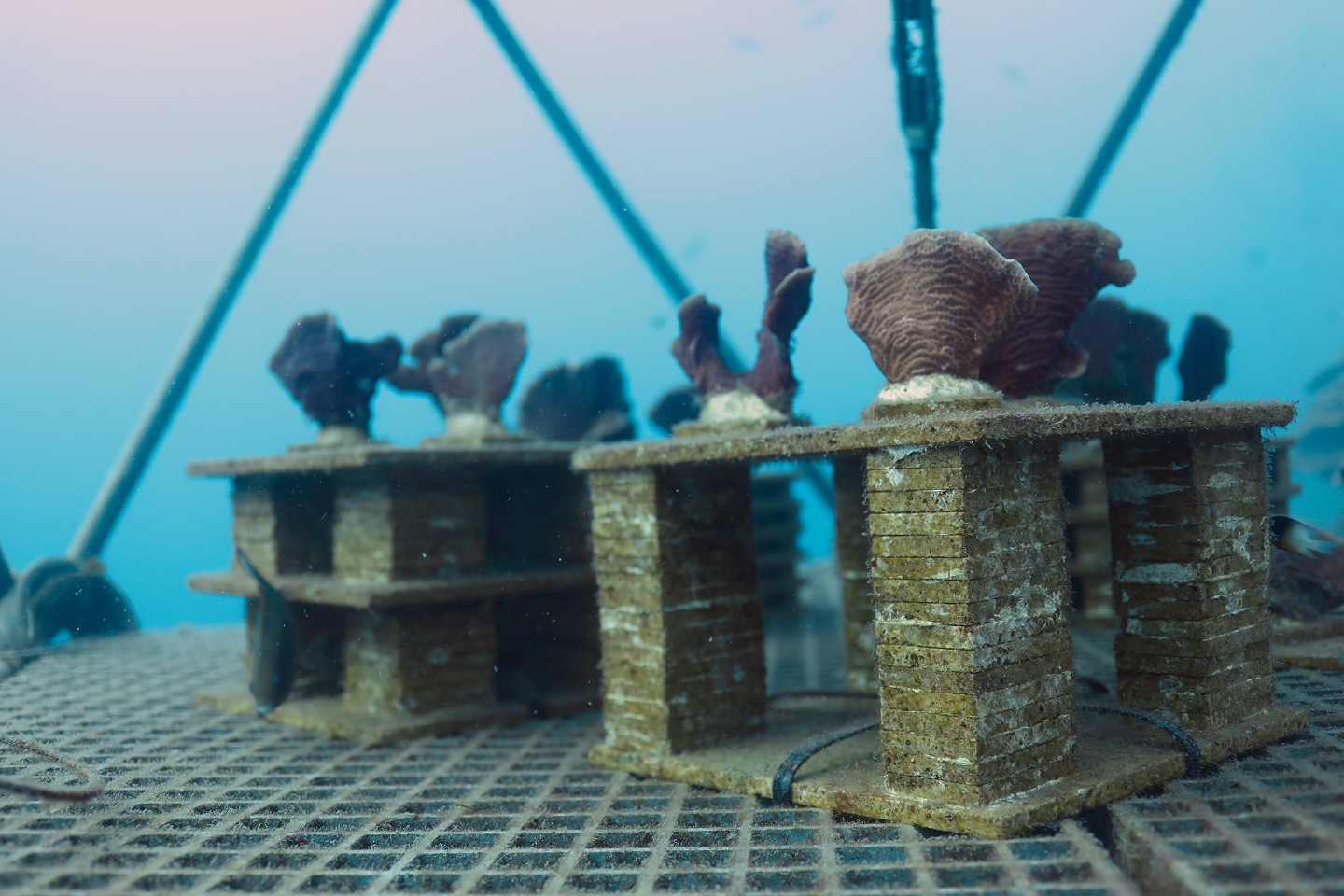Viralization as a microbial approach for enhancing coralreef restoration
AbstractCoral
reef ecosystems rely on microorganisms to carry out biogeochemical processes essential to the survival of corals and the reeffood web. However, widespread shifts from coral to algal dominance as a result of anthropogenic pressures have promoted microbialcommunities that compromise reef health through deoxygenation and disease. These degraded reefs become locked in a “microbialized”state characterized by high microbial biomass, low oxygen, and heightened pathogenic activity that stymie efforts to outplant coralsonto the reef, a common approach applied to restore these ecosystems. Over 18 months, we compared viral and microbial dynamicsalongside physical and chemical parameters (“water quality”) between two coral outplanting sites and two midwater reef mesocosmscalled Coral Arks. Seaf loor sites exhibited microbialization, whereas Arks maintained conditions with higher viral abundances andvirus-to-microbe ratios, smaller and less abundant microorganisms, and consistently higher dissolved oxygen, water f low, and lightavailability. These conditions, which we term “viralized”, supported enhanced coral growth and survival, greater benthic diversity,increased coral recruitment, reduced turf and macroalgae, and higher fish abundance compared to outplanting sites. Despite thesebenefits, analysis of microbial carbon metabolism genes revealed an underlying trend towards microbialization at both sites, ref lectinglarger-scale regional decline. These findings emphasize that microbial and physicochemical conditions are drivers of reef restorationoutcomes; to be successful, restoration strategies must target the underlying environmental factors that support coral survival andresilience. We identify key microbial and physical variables—such as oxygen levels, f low, and viral activity—associated with viralizedreef states, which should serve




.avif)